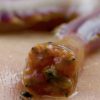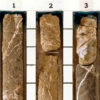Nicknamed “Spunky,” the young hawk was spotted living in an eagle’s nest in June. Experts initially thought his chances for survival were low. Hawks and eagles are normally mortal enemies. Hawks feed on small rodents, rabbits, and snakes, but Spunky was seen eating a flounder that he stole from one of the other eagles. He […]










